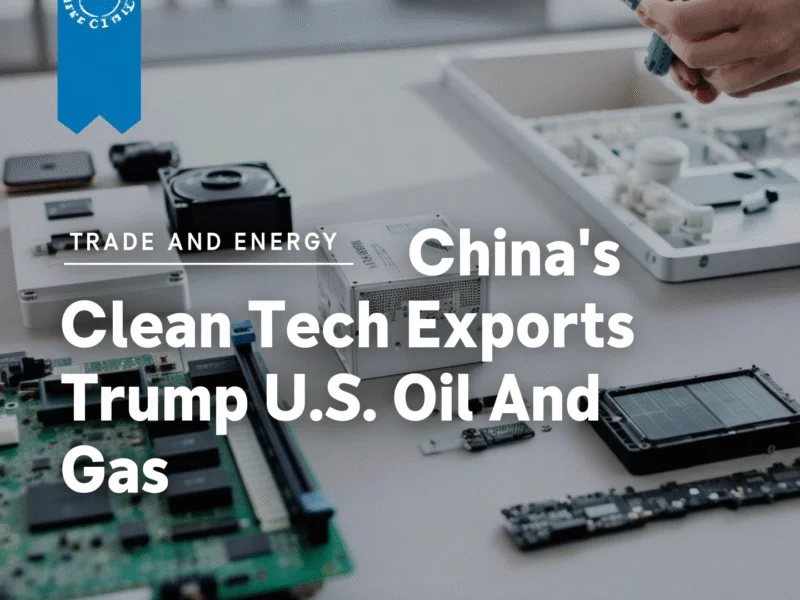China’s clean technology exports are dramatically outpacing American fossil fuel sales as global energy markets increasingly favor renewable solutions over traditional carbon-based resources. According to recent analysis using data from the U.S. Energy Department, Energy Information Administration, China’s GACC and energy researcher Ember, Chinese exports of clean energy-related products reached $120 billion through July 2025, compared to just $80 billion in U.S. carbon-based energy exports during the same period.
Growing Clean Tech Export Dominance
The $40 billion export gap continues a trend established in 2024, when China’s clean energy exports totaled $180 billion compared to $150 billion for U.S. fossil fuel sales worldwide. The disparity appears to be widening, with Chinese clean tech exports reaching $20.3 billion in August alone according to data from Ember’s China clean tech exports tracker. This surge comes despite the Trump administration’s focus on expanding domestic fossil fuel production while eliminating federal support for clean energy projects.
Global Renewable Energy Demand Accelerates
Rapid growth in renewable power demand worldwide is driving China’s export success, with solar and wind power becoming the fastest-growing sources of electricity generation in the first half of 2025. For the first time, renewable additions overtook coal worldwide, reflecting how sustainable energy solutions are increasingly competitive on both cost and deployment speed. Industry experts note that renewable installations can be completed faster than traditional power plants while delivering lower long-term energy costs.
Policy Reversals Impact U.S. Competitiveness
The Trump administration’s reversal of Biden-era clean energy programs has significantly impacted America’s position in the global energy race. Tax credits that previously stimulated a manufacturing boom have been revoked, leading to canceled projects and lost jobs according to Senator Ron Wyden’s analysis of the manufacturing impact. “In terms of the global arms race for clean energy jobs and investment, the U.S. went from the middle of the pack to the front basically overnight with the Biden programs that Trump has eliminated,” Wyden stated.
Economic Consequences for American Consumers
While U.S. gasoline prices show modest declines, electricity costs are rising more than twice as fast as overall inflation, creating financial pressure on American households. The policy shift away from clean energy support has reversed momentum that was bringing down energy costs while creating hundreds of thousands of manufacturing jobs across the country.
China’s Manufacturing Advantage in Key Technologies
China has established dominant positions across multiple clean technology sectors, including:
- Solar panel manufacturing and export
- Wind turbine production and installation
- Lithium battery technology and energy storage systems
- Electric vehicle manufacturing and components
Global Energy Transition Continues Despite U.S. Policy Shifts
The international move toward renewable energy continues accelerating even as the Trump administration prioritizes fossil fuel development. Additional coverage from our network shows how technological innovation in adjacent sectors, including AI development platforms and flexible infrastructure solutions, continues driving efficiency improvements in renewable energy deployment worldwide.
Long-Term Implications for Energy Markets
The widening gap between Chinese clean tech exports and U.S. fossil fuel sales suggests structural changes in global energy markets that may persist regardless of national policy directions. As renewable technology costs continue declining and installation speeds accelerate, countries prioritizing clean energy manufacturing appear positioned to capture growing export markets while those focusing primarily on carbon-based resources face increasing competitive challenges in the global energy trade.



